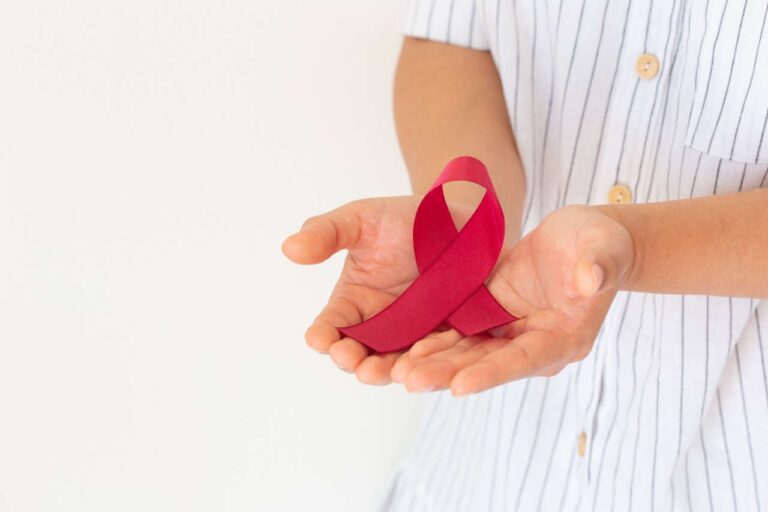
Ruxience, el nombre comercial de rituximab, se utiliza para tratar a adultos con leucemia linfocítica crónica (LLC), granulomatosis con poliangeítis (GPA) (granulomatosis de Wegener), poliangeítis microscópica (MPA), artritis reumatoide (AR) y ciertos tipos de linfoma no Hodgkin (LNH).
El Ruxience es un anticuerpo monoclonal que forma parte de un grupo de medicamentos llamados biosimilares. Interactúa con una proteína llamada CD20 que está presente en los linfocitos B, un tipo de glóbulo blanco. Se cree que actúa solo para destruir las células cancerosas o ayuda al sistema inmunitario a eliminarlas.
Ruxience es una formulación intravenosa (IV) estéril, libre de conservantes, transparente a ligeramente opalescente e incolora a amarillo parduzco pálido. Hay viales de dosis única de Ruxience de 100 mg/10 ml o 500 mg/50 ml, ambos con una concentración de 10 mg/ml.
¿Para qué se utiliza el Ruxience?
- Ruxience se utiliza en el tratamiento de cánceres como el LNH y la LCC solo o en combinación con otros agentes de quimioterapia. Funciona reduciendo o deteniendo el desarrollo de células cancerosas.
- Ruxience también se utiliza para tratar la AR de moderada a grave en combinación con metotrexato en aquellos pacientes con una respuesta inadecuada a otras terapias de tratamiento. Ruxience ayuda a reducir las molestias y la hinchazón de las articulaciones.
- El Ruxience actúa en el MPA y el GPA para prevenir la acción de los componentes del sistema inmunitario sobre sí mismo. Esto puede disminuir la inflamación de los vasos sanguíneos (vasculitis) y ayudar a prevenir el daño orgánico. El Ruxience se utiliza en combinación con un grupo de esteroides llamados glucocorticoides para esta indicación.
Cómo funciona
Como anticuerpo monoclonal, el Ruxience se une selectivamente al antígeno transmembrana CD20 presente en los linfocitos B y pre-B maduros. Una vez unido al CD20, se cree que marcará las células para su destrucción o informará al sistema inmunitario que pueden ser destruidas.
Precauciones antes y después de usar Ruxience
Ruxience solo debe utilizarse en entornos con acceso rápido a recursos de reanimación completos y bajo la estricta supervisión de un profesional sanitario calificado.
Antes de comenzar cada infusión de Ruxience, se administrará premedicación con un analgésico/antipirético (como acetaminofén) y un antihistamínico (como difenhidramina) para reducir el riesgo de reacción a la infusión. La primera infusión puede durar de 4 a 6 horas; sin embargo, las infusiones posteriores deberían durar entre 3 y 4 horas.
El Ruxience puede interactuar con otros medicamentos. Por lo tanto, debe informar a su médico sobre todos los medicamentos o suplementos que esté tomando, ya sean con receta, vitaminas, medicamentos de venta libre o suplementos herbales.
Asegúrese de discutir su historial médico con su médico, ya que este medicamento puede empeorar ciertas afecciones, especialmente si tiene problemas cardíacos o renales, un sistema inmunológico debilitado o el virus de la hepatitis B.
Dosis y administración de medicamentos
Solo profesionales médicos con los recursos necesarios deben administrar Ruxience, y cada infusión debe ir precedida de premedicación para prevenir reacciones graves relacionadas con la infusión que podrían ser mortales. Su médico le realizará análisis de sangre periódicos para detectar cualquier efecto secundario y comprobar la eficacia del medicamento.
La dosis de Ruxience varía según la indicación y la superficie corporal.
- Para el LNH, la dosis recomendada es de 375 mg/m².. Su médico le proporcionará instrucciones específicas sobre cuántas dosis recibirá para el tratamiento y si se necesitan otros agentes de quimioterapia.
- Para la LLC, se administrará una dosis de 375 mg/m² el primer día del primer ciclo, seguida de una dosis de 500 mg/m² en las dosis posteriores. Completará seis ciclos de 28 días con los medicamentos de quimioterapia fludarabina y ciclofosfamida.
- En la AR, el Ruxience se administra en combinación con metotrexato en dos infusiones de 1000 mg con dos semanas de diferencia. Pueden ser necesarios ciclos posteriores según la respuesta al tratamiento, que deben administrarse cada 24 semanas.
- Para la GPA y la MPA, la dosis inicial es de 375 mg/m² una vez a la semana durante 4 semanas. Para los pacientes que hayan logrado controlar la enfermedad después del primer mes de tratamiento, su médico podría recetar dos dosis adicionales de 500 mg/m² con un intervalo de 2 semanas, seguidas de una infusión de 500 mg cada 6 meses, según la respuesta al tratamiento.
Efectos secundarios

Las personas que toman este medicamento pueden experimentar reacciones leves o graves después de la infusión. Por lo tanto, no dude en informar a su profesional de la salud sobre cualquier reacción que note durante o después de una infusión. Ruxience no debe administrarse a personas con hepatitis B activa.
Los siguientes son algunos de los efectos secundarios más comunes del Ruxience:
- Infecciones (especialmente infecciones de las vías respiratorias superiores)
- Fiebre
- Escalofríos
- Debilidad
- Cansancio
- dolores corporales
- Náuseas
- Recuentos bajos de glóbulos rojos y glóbulos blancos
- Dolor de cabeza
- espasmos musculares
- Hinchazón de las extremidades (edema)
Debido a la rápida eliminación de las células cancerosas, Ruxience puede ocasionalmente inducir síndrome de lisis tumoral Esto puede provocar insuficiencia renal y arritmias. Informe a su médico si presenta náuseas, vómitos, diarrea o falta de energía entre 12 y 24 horas después de la infusión.
Pueden presentarse reacciones cutáneas graves en cualquier momento durante el tratamiento con Ruxience. Si experimenta llagas dolorosas, sarpullido, ampollas, descamación de la piel o pústulas alrededor de los labios o la boca, notifique de inmediato a su profesional de la salud.
Leucoencefalopatía multifocal progresiva La leucoencefalopatía multifocal progresiva (LMP) es una infección cerebral poco frecuente que puede presentarse en pacientes que toman Ruxience. Informe a su médico de inmediato si experimenta problemas de visión, pérdida del equilibrio, dificultad para caminar o hablar, o debilidad en un lado del cuerpo.
También debe informar a su médico de inmediato si experimenta alguno de los siguientes síntomas durante o después de la infusión, ya que podría estar experimentando una reacción a la infusión:
- Urticaria
- Dificultad para respirar
- Hinchazón de la cara, labios, lengua o garganta.
- Picor
- Mareo
- Dificultad para respirar
- Dolor o presión en el pecho
- sibilancias
- Tos repentina
- Latidos cardíacos acelerados
- Enrojecimiento, calor o hinchazón de la piel.
Costo
Dependiendo de la farmacia, el precio al por mayor de una dosis de Ruxience es de aproximadamente $764 por un suministro de 10 ml. La cantidad exacta que paga por el medicamento depende de varios factores, como su ubicación y su plan de salud.












